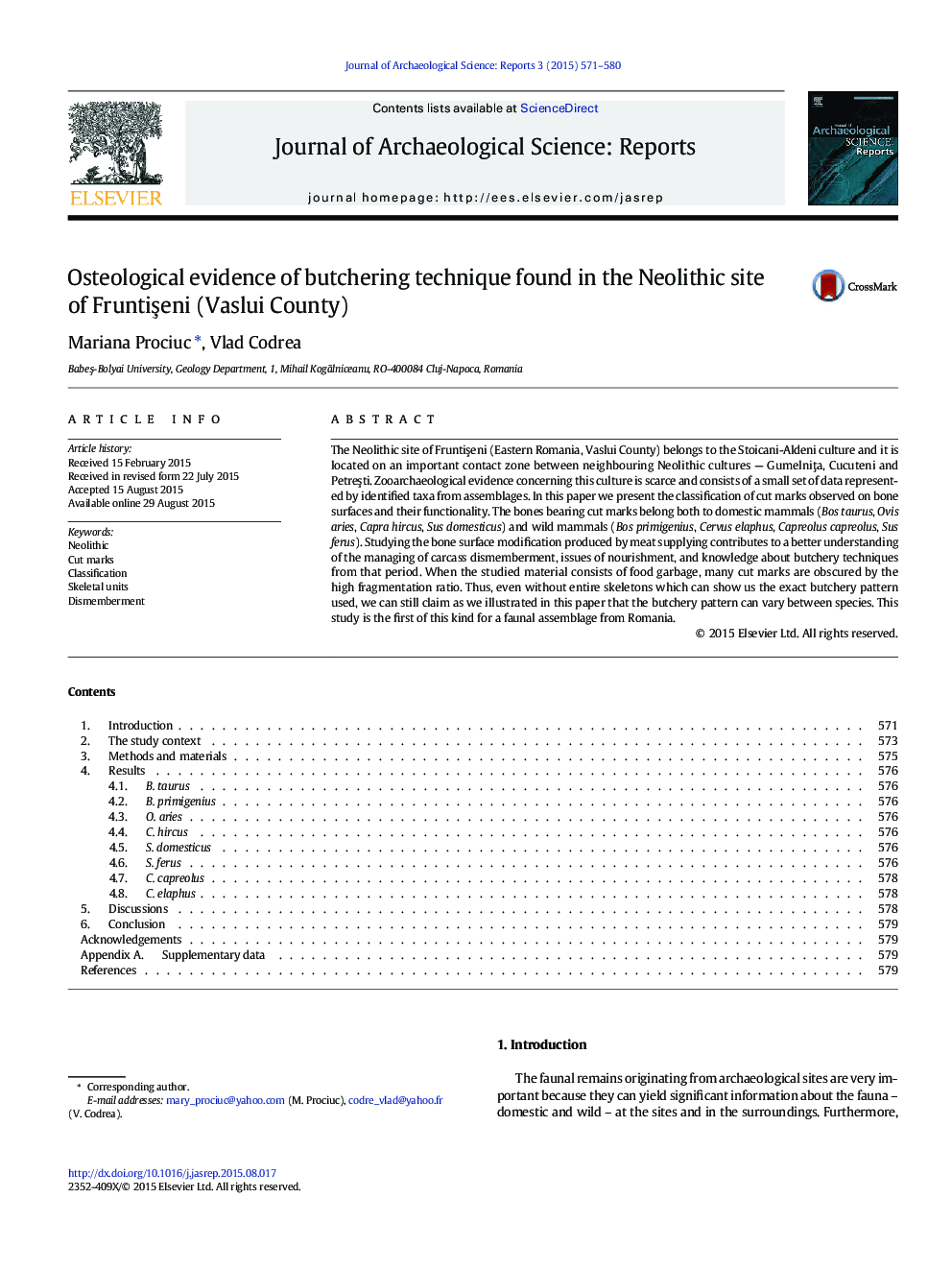| Article ID | Journal | Published Year | Pages | File Type |
|---|---|---|---|---|
| 7446629 | Journal of Archaeological Science: Reports | 2015 | 10 Pages |
Abstract
The Neolithic site of FruntiÈeni (Eastern Romania, Vaslui County) belongs to the Stoicani-Aldeni culture and it is located on an important contact zone between neighbouring Neolithic cultures - GumelniÈa, Cucuteni and PetreÈti. Zooarchaeological evidence concerning this culture is scarce and consists of a small set of data represented by identified taxa from assemblages. In this paper we present the classification of cut marks observed on bone surfaces and their functionality. The bones bearing cut marks belong both to domestic mammals (Bos taurus, Ovis aries, Capra hircus, Sus domesticus) and wild mammals (Bos primigenius, Cervus elaphus, Capreolus capreolus, Sus ferus). Studying the bone surface modification produced by meat supplying contributes to a better understanding of the managing of carcass dismemberment, issues of nourishment, and knowledge about butchery techniques from that period. When the studied material consists of food garbage, many cut marks are obscured by the high fragmentation ratio. Thus, even without entire skeletons which can show us the exact butchery pattern used, we can still claim as we illustrated in this paper that the butchery pattern can vary between species. This study is the first of this kind for a faunal assemblage from Romania.
Related Topics
Social Sciences and Humanities
Arts and Humanities
History
Authors
Mariana Prociuc, Vlad Codrea,
